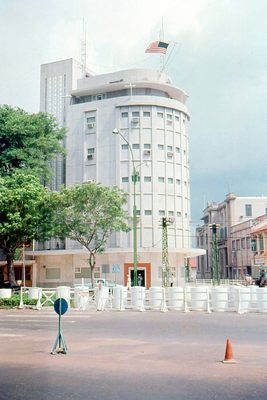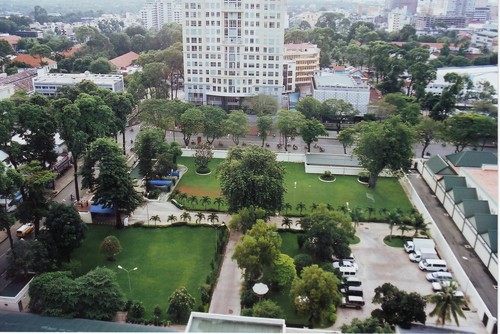About
By late April 1975, it had become all too clear that the 19-year-long Vietnam War was nearly over. With the People's Army of North Vietnam just outside the city limits, Saigon—the then capital of the Republic of South Vietnam—was only days away from falling into enemy hands.
The reality soon set in for U.S. Ambassador Graham Martin, and a full evacuation of all American military and civilian personnel in Saigon, along with thousands South Vietnamese civilians, was ordered. The evacuation, dubbed "Operation Frequent Wind," called for the U.S. Embassy in Saigon to be a secondary evacuation point but the complex was soon overwhelmed by locals and high-ranking South Vietnamese politicians alike, all desperate to flee the country.
In all, 7,000 people were airlifted out of South Vietnam in just two days, many of them via the U.S. Embassy. The last to leave were 11 U.S. Marines that had taken up position on the embassy's roof, after fighting back massive, unruly crowds that had overrun the building's grounds. The marines were evacuated from the embassy at 7:53 AM on April 30, marking the unceremonious end to America's involvement in the Vietnam War.
The former embassy itself no longer exists. Vietnam handed the building back over to the U.S. in 1995 after the two countries re-established diplomatic relations but the complex was in need of numerous repairs after being neglected for over 20 years. The building was demolished in 1998 and a new Consulate-General was built adjacent to the old embassy.
Know Before You Go
Today, history buffs can visit the site of what was once the US embassy, and be guided through the history and events that took place at this important location.The rooftop stairway from the original embassy building was salvaged and is now on display at the Gerald R. Ford Presidential Museum in Grand Rapids, Michigan.
Flavors of Vietnam: Fish Sauce, Pho & Royal Tea
Eating your way from North to South in Vietnam.
Book NowPublished
October 3, 2018
















